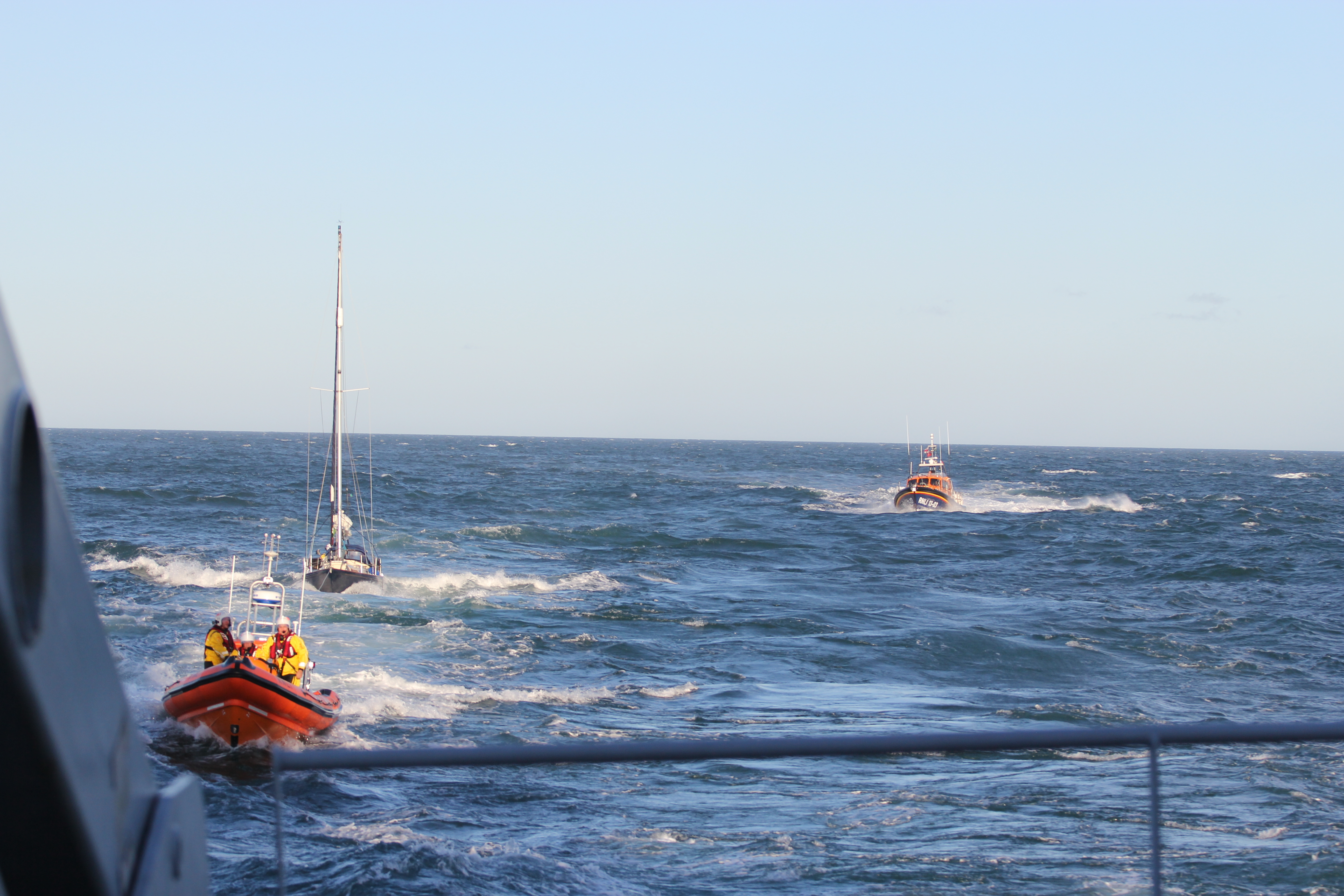The crew of HMS Monmouth abandoned their Royal Navy training exercise to help save the life of a Canadian fisherman in the North Atlantic.
The crew of HMS Monmouth broke off war games to respond to a Mayday from a Canadian fishing vessel.
The Plymouth-based frigate was taking part in Canada’s largest naval exercise in two decades, around 100 miles east of Nova Scotia, when the distress call was picked up on 19 September 2016.
The crew of the trawler, Double Mischief, reported that one of their shipmates had fallen badly and was suffering possible heart problems as a result.
HMS Monmouth’s boarding teams abandoned their search of their training vessel, the MV Leeway Odyssey, and raced at top speed in their boats to the fishing vessel which was ten miles away.
Within minutes, a small medical team was sent over to the fishing vessel, and Monmouth’s doctor, Surgeon Lieutenant Elizabeth Walters, was able to stabilise the casualty, a 34-year-old Canadian.
She determined he was in urgent need of hospital treatment.
The fisherman was carefully carried by one of Monmouth’s boats back to the frigate, while a Seahawk helicopter was scrambled by another participant of the exercise, the American supply ship, USNS Robert E Peary.
It landed on Monmouth, collected the casualty and flew him to a waiting ambulance at Halifax’s Stanfield International Airport.
Lt Walters accompanied the injured man throughout the long flight back.
“This is a perfect example highlighting the flexibility and professionalism of my team who rapidly switched roles in response to real-world events,” noted Monmouth’s Commanding officer, Commander Phil Tilden.
“It also demonstrates the fantastic partnership that the Royal Navy has with the US and Royal Canadian Navies such that we can operate seamlessly together to pool resources and deliver results – which in this instance undoubtedly saved a life,” he added.
After evacuating the casualty, the warship switched its attention back to exercise Cutlass Fury, bringing her ship’s company to Action Stations to fight alongside her NATO partners, the USS Berkeley and USS Gonzalez, in a simulated air attack using real Canadian F-18 fighter jets as the adversary.
Royal Navy tests drone boat – MAST – on the River Thames
Called Maritime Autonomy Surface Testbed (MAST), the drone boat has undergone sea trials ahead of the Unmanned Warrior exercise in…
HMS Echo helps RNLI in yacht rescue
The Royal Navy survey ship, HMS Echo provided assistance to RNLI crews as they went to the aid of a…
HMS Endurance makes final journey to scrapyard
The former Royal Navy icebreaker, HMS Endurance has now left Portsmouth for the last time. The vessel is heading to…






